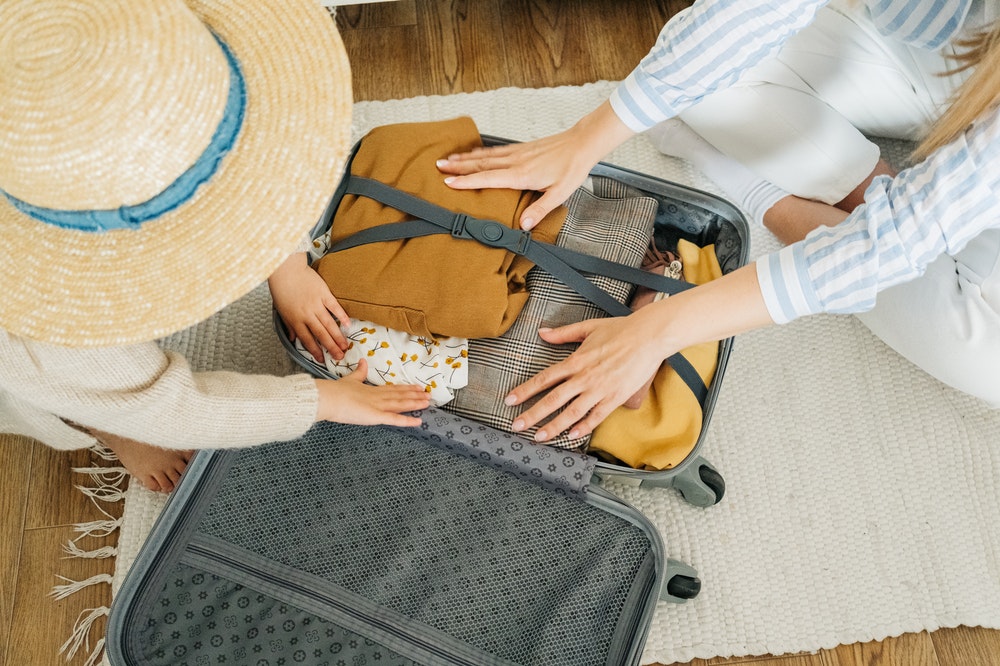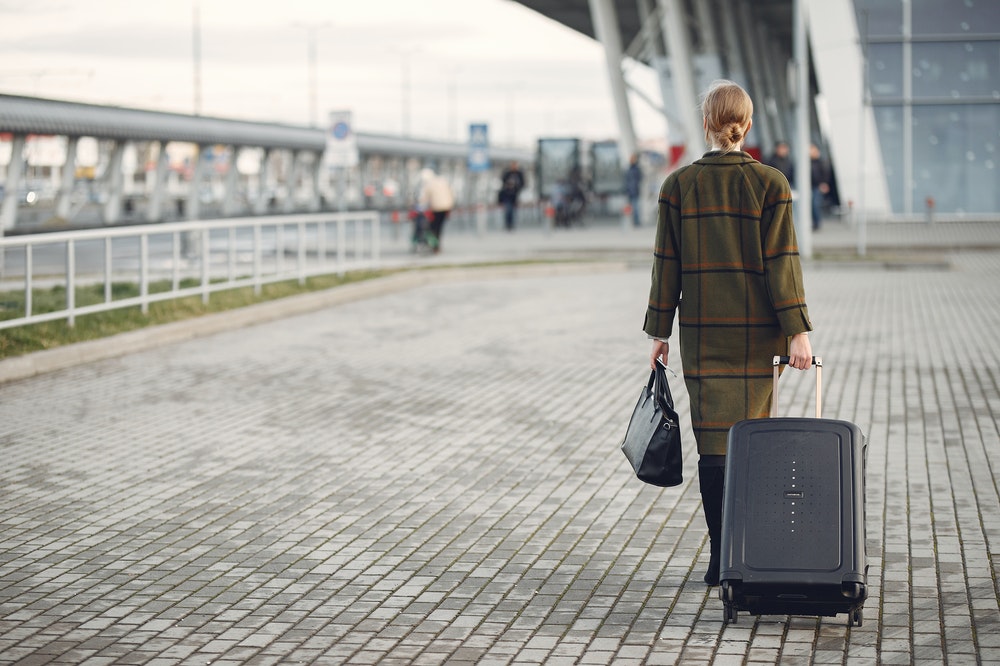Different types of luggage
When it comes to air travel, there are two main types of luggage.
There’s carry-on luggage, often referred to as hand luggage or cabin baggage, and there’s checked-in luggage, often referred to as hold luggage. As the name suggests, carry-on luggage is what you’re allowed to take with you on the airplane, and checked-in luggage — what you check in and what’s being placed in the baggage compartment. While these two are the most popular types of luggage, they aren’t the only ones.
Read on to learn more about types of luggage.
And what to do if your luggage gets lost or damaged.

Lost, damaged or delayed luggage
The most important thing is to report it.
Don’t leave the baggage hall, and head for the luggage counter to report the loss or damage. There you will be given a written confirmation (don’t loose it) and will be told you what should you do next. If your luggage is lost, damaged or delayed, the airline is liable and you're entitled to compensation up to 1300 euro (if the airline is responsible for the damage).
Second most important thing is to request compensation.
Contact your airline not later than within a week or 7 days, or within 21 days of receiving your luggage if it was delayed. Give a short explanation of the situation, attach your boarding pass and refer to EC 261/2004.
1. Carry-on, or hand luggage
It's a piece of luggage which can be brought on board the plane.
A carry-on bag is small enough to fit in the overhead bin or even under the seat in front of you. Usually, the dimensions of a carry-on are around 55 x 35 x 25 cm. Pay attention to that, as there are luggage sizers at the gate, and while boarding the plane the staff may ask you to place your bag inside to see if it fits. You may also be asked to weight you bag as well.
Overall, it’s not a large bag, and for many travellers a carry-on is not enough.
Quite often, in addition to your carry-on bag, you are allowed to bring a camera bag, briefcase, laptop bag or a handbag. Often, but not as often as it used to be, unfortunately, you are allowed to carry on a plane a carry-on bag and a personal item (see description below).
There are various limits and restrictions when it comes to carry-on bags.
For instance, you are not allowed to carry liquids (creams, gels, lotions, perfumes, etc.) over 100 ml. And you have to put all of your liquids in a resealable plastic bag (max capacity - 1 litre). Various sharp objects also are not allowed in carry on luggage. So are tools, guns and self-defence items.
2. Personal item
A personal item is a small carry-on.
Some airlines may refer to laptop bags, briefcases or camera bags as personal items. Very often you're allowed allowed to take it on a plane along with a full-sized carry-on bag.
But it’s not the same with all airlines. As airline baggage allowances shrink, many airlines ditch free personal item, and budget airlines such as Wizz Air and Ryanair limit their non-priority customers to a personal item only. Usually dimensions of a personal items are around 45 x 25 x 20 cm. As you can see, it’s a really small bag.
Basically, it’s a medium-sized school bag or a large shoulder bag.

3. Checked luggage
Checked luggage is luggage which is put in the cargo hold of an aircraft.
Unlike cabin luggage, checked luggage is inaccessible to the passenger during the flight. Checked luggage is weighed at the check-in counter and is marked with a tag with a passenger’s name and destination. If it’s a connected flight, your checked bag will be checked through from origin to destination. It will be unloaded at the stopover airport and loaded on the next plane.
There are cases, however, when you have to do it yourself.
When in doubts ask about it at the moment of check in.
4. Other luggage
Some of it you can bring on the plane, some - goes in the hold.
The rules differ from airline to airline.
Sports equipment
Different types of sports equipment can be transported on a plane.
Bicycle, golf equipment, skiing and snowboarding equipment, diving equipment, surfing equipment, just to name a few. Mostly it’s not for free, though, but there are airlines allowing its passengers to transport sports equipment as a regular checked luggage on some routes. Often there are special fees for sports equipment.
Musical instruments
Can you carry a guitar on a plane? What about other musical instruments?
Yes, you can carry a musical instrument on a plane. There are several ways how you can do it. If it’s a small musical instrument, such as a violin, you can bring in the cabin instead of a piece of cabin baggage. If you have a large musical instrument, you can transport it as check-in luggage. It must be properly packed in a hard case, and you should also be paying attention to the Instruments policy of particular airline - because some airlines disclaim liability altogether for lost of or damage to musical instruments.
You can also take your large musical instrument in the cabin and transport it on a seat. In this case, you have to purchase a special ticket for your musical instrument.
Summing it up, while taking a guitar on a plane is possible, it can be tricky.
Wheelchair
Normally wheelchairs are transported for free.
However, there’s limited space for wheelchairs in the cabin, so the wheelchair probably will have to go in the cargo hold and transported as check-in luggage.
You need to register your wheelchair at time of booking.
For more information contact your airline.
Luggage for babies and kids (prams and car seats)
All passengers are entitled to bring their luggage on the plane.
That includes also the smallest of passengers - babies. The size of the infant luggage and the number of items you can bring on a plane varies from airline to airline. Check the airline rules and regulations before booking your flight. Some airlines are really generous when it comes to free hold luggage allowance for baby equipment, whereas some are not.
Read more: Flying with a baby: Rules & tips
Firearms
It's possible to transport firearms for sports and hunting purposes only.
And if you have appropriate licenses and permits.
Your weapon must be checked and transported in the cargo hold, and you must fill in and sign declaration for transportation of arms and ammunition. Contact your airline to find out more specific details. You may have to apply for a licence to travel with weapons.

Most common types of travel bags
Now you know what are the most common types of luggage.
There are different types of bags you can use for these purposes.
Carry-on luggage:
- Small suitcase (either softside or hardside)
- Carry-on friendly travel backpack or hiking backpack
- Boarding bag
- Carry-on friendly duffel bag
Personal item:
- Small underseat luggage
- Small boarding bag
- School backpack or other smallish backpack
- Large handbag
- Laptop bag
- Briefcase
Checked luggage:
- Softside luggage
- Hardside luggage
- Large travel duffel bag
- Large hiking / travel backpack
- Rolling backpack
Happy travels!